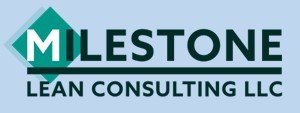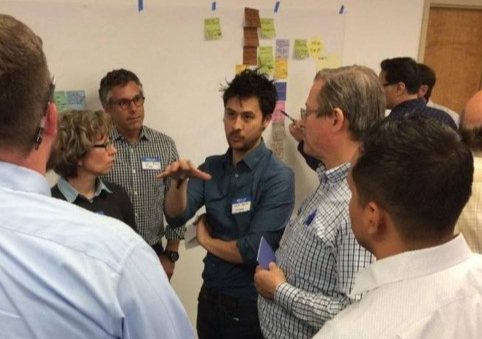Lean Construction
A wonderful thing about things that are true, they tend to simple. Lean is simple. Not simplistic, simple. What is Lean, or more specifically, Lean Construction? For a long time that has not been an easy question to answer. There are many aspects including eliminating waste, reliable workflow, continuous improvement, and respect for people. But let’s get right to the point. It can simply be defined as:
Pull value to the customer with the least waste by flow efficiency and do it better and better
You may have noticed that there is no mention of construction. That is because lean thinking is universal. It is not specific to any industry. It applies just as well to construction as it does to hospitals, banking, and automakers. So what differentiates “Lean Construction” from any other “Lean”? It differs in how the principles are applied. It differs in the methods and tools we use to meet the specific needs of our industry. Simply put, Lean Construction is:
Lean thinking, methods, and tools that meet the specific needs of the construction industry
For example, the best-known Lean Construction method is the Last Planner System®. Yet, outside of construction, few have heard of it. That is because it was created to put Lean principles to work in a construction setting. Different from most manufacturing, we typically design and build one large item at a time, usually custom designed and built, by many organizations brought together for that one project. And this demands different methods and tools from what is needed in the largely repetitive world of manufacturing.
A VERY BRIEF HISTORY
The history of Lean Construction is relatively short. Ideas that remain central to Lean Construction developed independently of what was happening in the manufacturing world.
A 1988 article in the MIT Sloan Management Review entitled “Triumph of the Lean Production System” described the approach to production used by Toyota. The system aimed for continuous flow production without buffers such as excess inventory or workers to mitigate quality problems. The modern industrial Lean movement was igniting. Meanwhile, in the 1990’s, pioneers of Lean Construction, Lauri Koskela, Glen Ballard, and Greg Howell realized that what they had been implementing for several years in construction was much like what was happening in Japan with Toyota. It was about this time that they adopted the word Lean for their work in construction productivity. They formed the International Group for Lean Construction (IGLC) in 1993. Then, Lean Construction Institute was formed in 1997 By Glenn Ballard and Greg Howell, according to the LCI website, “as a way to develop and disseminate new knowledge regarding the management of work in projects.”
Over the last 20 years, interest in Lean Construction has grown substantially with most attention focused on implementing and improving the Last Planner System and Integrated Project Delivery. Organizations have gradually discovered that a project-by-project approach has limited benefit compared to a Lean transformation of the entire enterprise. And the ground-breaking book, This is Lean, published in 2015, propelled the understanding of Lean forward again by distilling Lean around the core idea of flow efficiency. In the forward to the LCI edition of the book, Greg Howell wrote, “The Lean Construction community started from a different place and context. Had This is Lean been available in those early years, we might better have managed the development of Lean construction… This new book should spark some deeper exploration and forward thinking.”
LEAN CONSTRUCTION TODAY
We know why we need it. There is huge opportunity for ongoing improvement in design and construction. But, while simple, Lean is not easy. Why? As the book Lean Thinking pointed out in 1996, it “requires a complete rearrangement of your mental furniture”. For real change, that rearrangement begins with leadership. It also requires diligent application, or we could say discipline. Lean success is a change in both knowledge and practice, in other words, culture.
We have a greater understanding of Lean in construction than ever before. With that understanding has come clarity. And the child of understanding and clarity is simplicity. Lean Construction is built on a simple definition and several key principles that are the foundation of all thinking, behavior, methods, and tools. Sticking to that foundation gives us a broad platform for innovation and improvement.
SO, AGAIN, WHAT IS LEAN CONSTRUCTION?
LEAN: Pull value to the customer with the least waste by flow efficiency and do it better and better
LEAN CONSTRUCTION: Lean thinking, methods, and tools that meet the specific needs of the construction industry
There is a customer. There is a producer. And there is the process of producing something of value. At the core of Lean is “how” we produce value.
Lean is based on the concept of flow efficiency. Everyone wants to be efficient. But instead of a focus on resource efficiency, Lean is focused on flow efficiency. What do we mean?
Flow Efficiency. It is the core idea of Lean. Instead of optimizing individual resources or steps, we optimize the whole. We look at flow from the point of view of the work. Imagine a project as a canoe flowing down the river. Now put several people in the canoe and give them paddles. Our goal is not for each paddler to be efficient. Our goal is to move the canoe as efficiently as possible. We want continuous flow. This is one reason why Lean Construction so heavily emphasizes collaborative, integrated teams. If all the paddlers are focused on themselves what happens to the canoe? It zigs and zags, hitting rocks and getting caught in the branches as it stops and starts down the river. On the other hand, if everyone works together, focused on the flow of the canoe, doesn’t the canoe move faster and smoother? Are the paddlers working harder? No. Actually, there is less strain and no wasted effort. Better results with less effort. And that is the key insight of Lean Construction. Make work flow efficiently.
Customer. The reason for the work is to transform something to meet a customer request. It is impossible to define value without the customer. Success is based on satisfying the customer demand.
Value. Value is defined by the customer. It is what the customer wants. A project may first need to help a customer define value. Once defined, it is the job of the producer to deliver what has been agreed. From the point of view of the customer, that’s why the producer exists (as a producer, not as a person). Once value is defined, the goal of the producer now is to move the work through all the value adding steps as efficiently as possible. This is the value stream. And the ideal is continuous flow.
Waste. Anything that is not value. Paddling the canoe into a rock is effort that doesn’t produce value. The canoe, or work, is not moving forward. That is waste. In our work, on our projects, that might include redoing work because of a defect, moving materials several times around a jobsite, RFI’s waiting to be answered, meetings that cover the same issues over and over. Waste includes any variation from the plan or overburden of people and equipment. We want to eliminate waste. This is a never-ending effort to have the least possible waste.
Pull. Produce in response to a demand. If there is no demand, why produce? Instead of pushing work, producing in anticipation of a need, we produce the right thing, at the right time, in the right quantity.
Better and better. Continuously improve the what and the how, the product, the people, the process, and flow of value. There is always something to improve, always waste to eliminate. We aim for perfection even though we will never reach it.
Put it all together. Pull value to the customer with the least waste by flow efficiency and do it better and better.
ATTRIBUTES OF A LEAN ORGANIZATION
Lean organizations are often referred to as learning organizations. If you are not learning, you are not solving problems, you are not becoming better at your craft, you are not innovating or continuously improving. A learning organization is reflected in both the people and processes that allow and encourage learning to take place. There must be a means to turn an idea into standard work, or the way we do things.
Additionally, to make work flow involves interaction between people. Because there is more than one person in the canoe, we need to recognize the important role each personal plays in achieving a flow efficient project. This is the principle of respect for people. Closely related is collaboration. Without collaboration, a focus on the whole, we impede flow. Key to working together is Trust. It is like oil to an engine. Trustworthy people are the basis for trust. It matters who is on the team. And discipline is a vital, and often overlooked principle. Without directed, focused, diligent, consistent effort, we will diminish our ability to create value.
Another Key attribute is awareness or clarity. It is seeing everything all the time. It is seeing things for what they really are. Bad information leads to bad decisions. You can’t manage what you can’t see. An important aspect of this is visual management. And we have to know where we are going. Lean organizations have specific short and long term goals and are focused.
To the extent to which these attributes exist in your organization is directly proportional to your ability to implement the basic Lean principles. This is especially true in design and construction because they are so heavily people and information driven.
Some good books on these topics to get you started: Good to Great, The Five Dysfunctions of a Team, The Toyota Way, and The Ideal Team Player.
METHODS AND TOOLS
How do we take the principles of Lean and make them the way we work? Methods operationalize the principles. Then we use the right tool for the job. As an example, consider the Last Planner System. In Lean Construction our intent is to pull value to the customer with the least waste and do it better and better. How does LPS support this? By bringing trades or design teams together to collaboratively manage the work. They use tools such as planning boards and sticky notes, or digital tools, to identify and remove potential roadblocks before they can impact flow. By pull planning backwards from a milestone, teams come to understand what each trade needs for smooth hand-offs.
The point is that methods and tools drive the right behaviors and help work to flow efficiently.
What are some other methods and tools used in Lean Construction? For learning and problem solving we might use Study Action Teams, Plan-do-check-adjust, 5 Whys, Fishbone diagrams, A3’s, and Kaizen events. Project teams may use Integrated Project Delivery, Big Rooms, Integrated Form of Agreement (IFOA) contracts, or Kanban boards. In the field 5S is an especially effective method. In the office, Value Stream Mapping helps us see how work flows through our organization.
YOU HAVE STARTED, NOW KEEP GOING
Go to our Resources page and download our guide to additional learning resources (including Milestone Lean Consulting).








